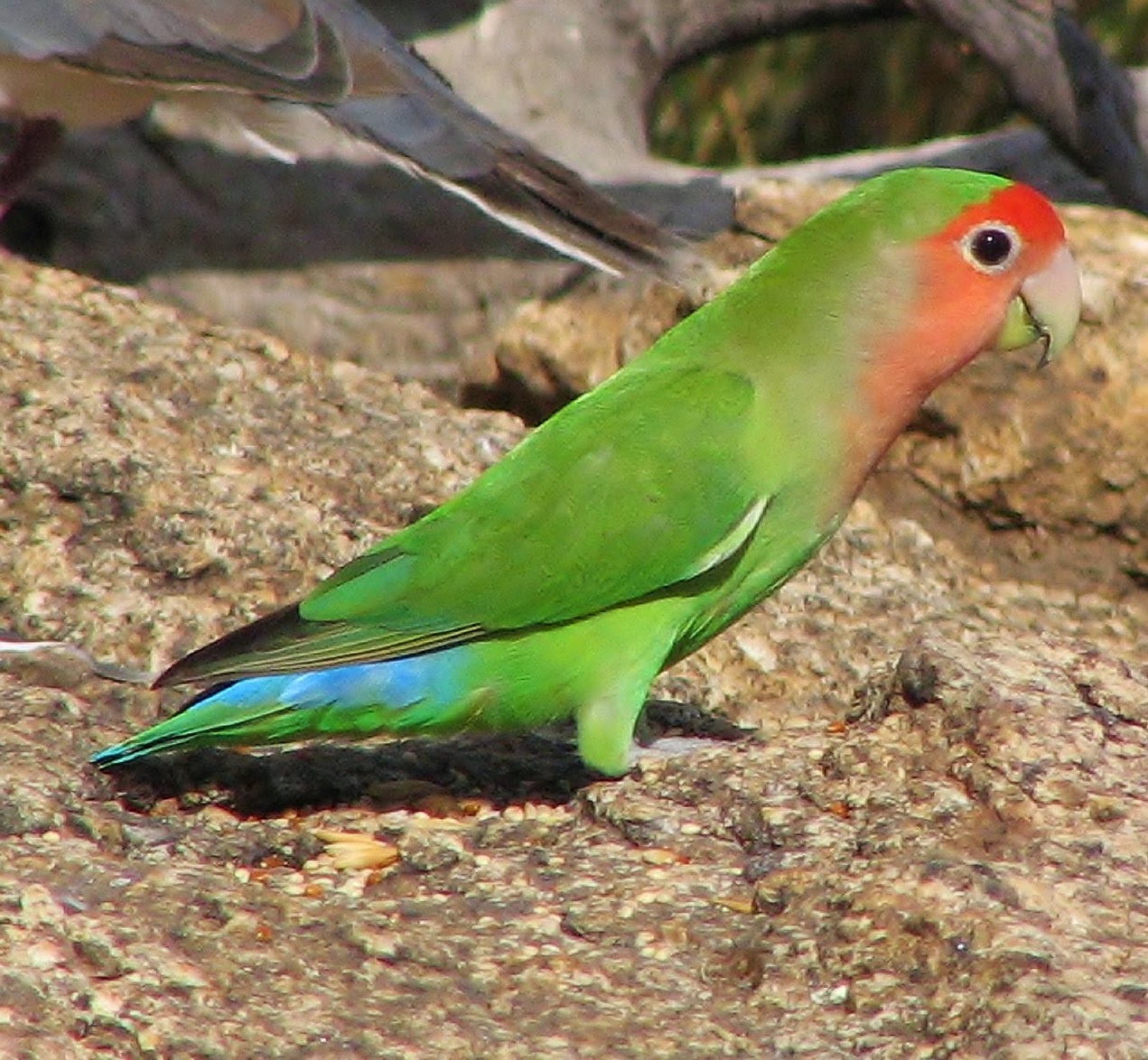 |
| Photo by Alastair Rae (Wikipedia) |
Common name:
rosy-faced lovebird (en); inseparável-de-faces-rosadas (pt); inséparable rosegorge (fr); inseparable de Namibia (es); rosenköpfchen (de)
Taxonomy:
Order Psittaciformes
Family Psittacidae
Range:
This species is found from south-western Angola, through Namibia and into north-western South Africa. There are also feral populations introduced into Puerto Rico and Arizona.
Size:
These birds are 15-18 cm long and have a wingspan of 23-28 cm. They weigh 43-63 g.
Habitat:
The rosy-faced lovebird is mostly found in dry savannas, usually near permanent standing water, also using dry scrublands and rocky areas. They occur from sea level up to an altitude of 1.500 m.
Diet:
They feed on the seeds of various grasses and trees such as Albizia and Acacia, as well as buds and leaves of several plants.
Breeding:
Rosy-faced lovebirds breed in February-June. They are monogamous and nest in a rock crevice, or use the large, communal nests of sociable weavers Philetairus socius and white-browed sparrow-weavers Plocepasser mahali. The female lays 4-6 white eggs, which she incubates alone for 23 days while the male brings her food. The chicks are fed by the female while the male continues to bring food to the nest. They fledge 5-6 weeks after hatching.
Conservation:
IUCN status – LC (Least Concern)
This species has a large breeding range and is described as locally common or even abundant near water. The population is suspected to be in decline owing to unsustainable levels of exploitation.







